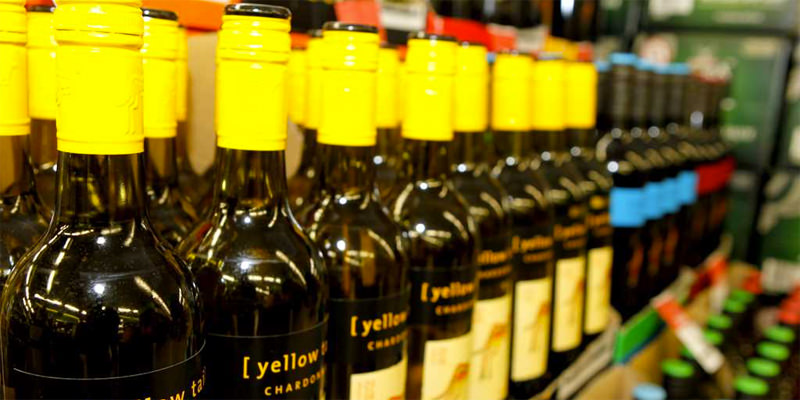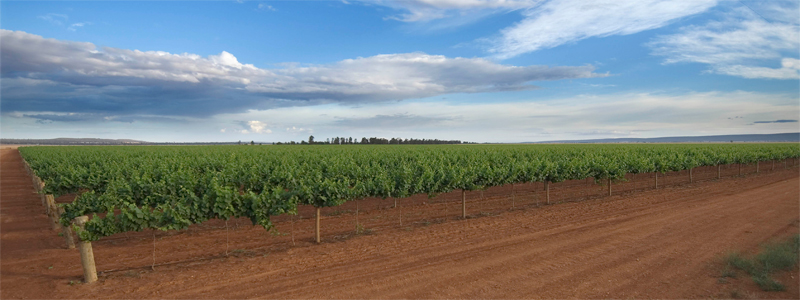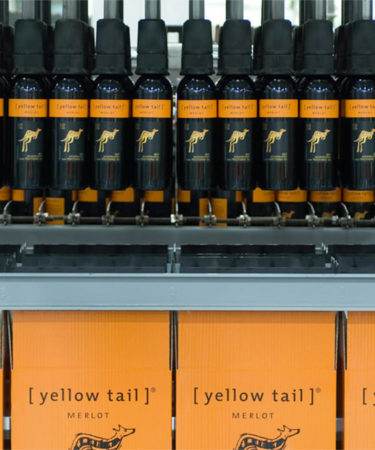In 1992, imports of Australian wine accounted for only around 3% of all imported wine to the United States, with Italy and France continuing to hold a tight grip on the market at 30% and 50% respectively. Wine from Australia was a relative novelty. Collectors knew of the country’s top-tier wines, but besides this, little Australian wine was on the shelves, and awareness from consumers was next to nothing. But only ten years later, Australian wine was on its way to capturing 20% of the U.S. import market, and the entire reason for this is the emergence of the wine brand Yellow Tail.
The fact that Yellow Tail has only been on the market for about 14 years is probably very surprising to anyone who came of drinking age in the early 2000s. In only a short amount of time, the wine became synonymous with affordable consumption. For most individuals who started to drink during this time, Yellow Tail was probably one of, if not the first, wine they consumed. Displays dominated wine sections – big-box retailers like Sam’s Club and Costco had massive shelf talkers with images of the yellow wallaby that were hard to miss – the bottle’s bright colors and bold marketing standing out against a sea of traditional labels. And once the cork was popped, it was insanely accessible, almost too easy to drink. If you were new to wine and didn’t yet feel a bottle warranted more than a Hamilton, there was a good chance you bought Yellow Tail and you were probably pretty pleased.

All of this was completely by design: the accessibility, the flavor profile, and of course, the market dominance. Yellow Tail’s success was based on appealing to a consumer new to wine, and delivering a flavor profile they immediately enjoyed. Whether that flavor profile was indicative of the natural tastes of wine, or was engineered to suit the Coca-Cola tastes of the American consumer is up for debate, but it certainly allowed the brand to achieve the title of one of the fastest growing brands in history. But while that growth made a lot of money for a lot of people and exposed millions of people to Australian wine, there are critics who argue this same brand ultimately undermined Australian wine sales abroad – an accusation Yellow Tail’s winemaker has fired back at – and that the industry is only now beginning to recover.
An Australian American Collaboration
Deutsch Family Wine and Spirits – a company that has annual revenues of over $450 million – has introduced and marketed a ton of wine brands to the U.S. consumer – they’re the same company that made the Beaujolais brand Georges Duboeuf a massive hit in the U.S. – and in the late ’90s, they were looking for their next big thing. “We’d been selling French wine in America for 20 years, and we were looking for a place to play in the sub $10 market,” CEO of DFWS Peter Deutsch recently told me. “At this price level we realized consumers were looking for a wine that was extremely ripe in flavor, fruit forward, with very easy to no tannins and a pleasant finish. We couldn’t generate this kind of wine at the sub $10 price level out of France, so we decided to look to Australia.”
Australia in 2001 was just beginning to have a larger profile on the American market, especially when it came to bargain wines. On the lower end, the market leader was Lindemanns, and that is against whom Deutsch wanted to directly compete. “We determined wine at this price point from Australia just tasted better than from other regions,” said Deutsch “so we decided we wanted to get involved in the Aussie business and deliver the best bottle of wine on the market for six bucks.” To do so, the Deutschs reached out to the Australian Trade Commission and let them know they were looking to develop an Australian wine for the American market, if there were any winemakers interested, let them know.

Halfway around the world, a family of Italian immigrants from Sicily, the Casellas, had been working a small 16-hectare (39.5-acre) vineyard in Australia since the 1960s, mostly operating as bulk grape suppliers to other wineries. John Casella had recently taken the business over from his parents and he too wanted to get involved in the American market – very little Yellow Tail is actually consumed in Australia – but not as a bulk grape seller, with his own brand. Casella reached out to the Australian Trade Commission and was connected to Deutsch. What the families worked out was a 50/50 joint venture and together they would create a new brand which would ultimately be called Yellow Tail. The Casellas brought their desirable Australian wine, and the Deutschs their penchant for marketing, not to mention their incredible U.S. distribution network, one that most start-up brands could never dream of having access to.
Giving Customers What They Actually Want
In order to succeed in the U.S., Yellow Tail had to be easy to understand. “The thinking was to create a certain level of simplicity. We wanted to give the consumers what they wanted,” said Deutsch. This meant creating a wine that went down as easily as grape juice. According to Deutsch, “when a wine is under $10 most consumers don’t want to fight with it, they want something fruit forward, that’s ripe, delicious and soft on the palette. So many wines from established regions tell the consumer what they should like, but we just wanted to give them what they wanted.”
 There have been reports that to achieve this desired taste, Yellow Tail actually engineers the wine to appeal to a broad cross section of American wine drinkers. Whether or not this is the case, this sort of flavor profile engineering is extremely common throughout the wine industry, from bargain wines all the way up to hundred dollar-plus cult wines – though no one likes to talk about it at the high end. The claim by some is that Yellow Tail removes the aspects of wine many people can find off-putting – tannins and acidity. Deutsch didn’t directly address this claim, but he reiterated Yellow Tail’s desire to deliver the flavor profile their consumer is looking for, which is more candid than many wine brands are willing to be. “There is no question that the American consumer is locked in to very fruit forward styles of wines. It’s in concert with people growing up drinking juice and Coke. Look at Starbucks, it is all about delivering maximum flavor in every sip.”
There have been reports that to achieve this desired taste, Yellow Tail actually engineers the wine to appeal to a broad cross section of American wine drinkers. Whether or not this is the case, this sort of flavor profile engineering is extremely common throughout the wine industry, from bargain wines all the way up to hundred dollar-plus cult wines – though no one likes to talk about it at the high end. The claim by some is that Yellow Tail removes the aspects of wine many people can find off-putting – tannins and acidity. Deutsch didn’t directly address this claim, but he reiterated Yellow Tail’s desire to deliver the flavor profile their consumer is looking for, which is more candid than many wine brands are willing to be. “There is no question that the American consumer is locked in to very fruit forward styles of wines. It’s in concert with people growing up drinking juice and Coke. Look at Starbucks, it is all about delivering maximum flavor in every sip.”
In addition to delivering maximum flavor, the brand also sought to distinguish itself in packaging. Prior to Yellow Tail’s debut, much wine packaging was fairly traditional and many consumers mentioned it was hard to remember the exact bottle they had enjoyed after drinking it. To solve this problem and stand out, Yellow Tail created packaging with a bright yellow wallaby in the center of the label and neon colored bars to distinguish different grape varietals. If you enjoyed Cabernet Sauvignon, you bought the bottle with the red label, yellow if you liked Shiraz and orange if you were in the mood for Merlot. “We did some testing and the label came back with mixed results, people didn’t like the animal on it,” says Deutsch, “but we took the risk because it was completely different. That risk turned out to be a home run.” The brand built on the Aussie stereotype of being laid back and carefree, and the messaging worked.

In 2001, when Yellow Tail debuted, the wine sold 200,000 cases. The following year, it sold 2.2 million. Currently the brand sells 8 million cases a year in the U.S. alone. The reason for this success, Deutsch says, isn’t just nailing the specific flavor profile American consumers are after, or creating what turned out to be dynamic packaging. In his mind, it all has to do with the 6 P’s he and his father Bill have always believed in when it comes to building great brands: people, product, price, packaging, promotion and potential. Potential here was the key, although the brand clearly delivered on the other five P’s — if it couldn’t scale fast, and deliver the same product at 8 million cases as it did at 200,000, the brand may never have become as influential as it did.
With Yellow Tail’s massive success came copycats. “In 2001 you couldn’t find an animal on a bottle of wine, now you walk in to a wine shop and it looks like the Bronx Zoo,” says Deutsch. But all of these new animal wines meant many other Australian producers also rushed to make a play for the sub $10 wine category that Yellow Tail had ignited, and in many ways that began to impact the impression many people had for the country’s wines. By 2005, the country had become known as a massive producer of cheap wine – plonk – and its import percentage began to slip. In 2012 only 10% of the wine America imported came from Australia, a loss of half the country’s market share in only seven years.
Currently Yellow Tail sits as the second largest wine brand in the U.S. having lost the first position to Barefoot a few years ago, but the brand continues to think of ways to grow and expand. “The future for Yellow Tail is finding ways to expand user experiences,” says Deutsch, “today we don’t have a portable format, and we need to identify one in order to allow our consumers to take our product more places.” It’s not crazy to think that a canned wine might be in the brand’s future.
